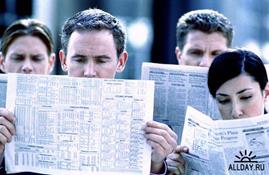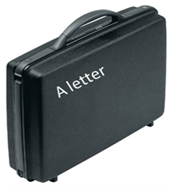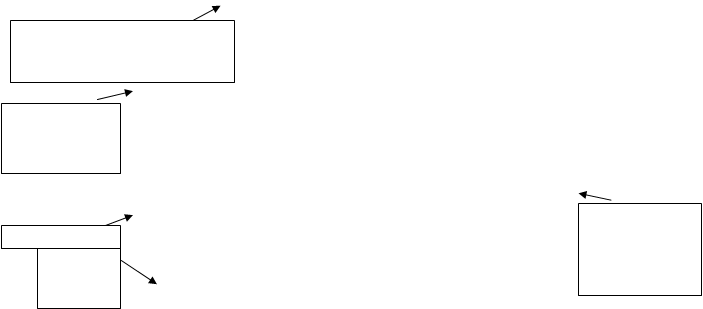Write down the words in bold to your dictionaries
8.3. Complete each sentence with the correct word:
1. Interviews, questionnaires, surveys are the ways to get information for ______ - research.
2. The document, which has a number if questions, printed or written on it is called ______.
3. ______ are people who answer questionnaires.
4. Companies try ______ their products to give most customers and prospects what they want.
5. Many market research surveys are taken at ______.
6. The way of getting competitive information is ______.
Write the complete sentence about each of the following. Use the dictionary.
1. Market research 2. Questionnaire 3. Survey 4. Competitive products.
Unit Four
Business Correspondence

1. What does business correspondence include?
2. “Put” the words connected with Business Correspondence in the case:

3. Add the new words to your dictionary:
| Post Office | почтовое отделение |
| snail-mail | почта |
| sender | отправитель |
| recipient | получатель |
| job applicant | претендент на рабочее место |
| staff members | сотрудники |
| business letter | деловое письмо |
| memo | служебная записка |
| fax message | факсимильное сообщение |
| press release | сообщение для печати, пресс-коммюнике |
| press-kit | информационная подборка для прессы |
| curriculum vitae (CV) | резюме |
| follow up | повторная рассылка |
| to formalize | официально оформлять |
Read an abstract about business correspondence and answer the questions
after it:
Business Correspondence
The major types of business correspondence include business letters, memos,
faxes, business newspapers and magazines, press releases, press-kits and other business documents (CV, contracts, etc.).
Business letters are formal paper communications between, to or from businesses and usually sent by e-mail, through the Post Office or sometimes by courier. Business letters sent through the Post Office are sometimes called “snail-mail” (in contrast to e-mail which is faster).
Some people write many letters each day and others only write a few letters over the course of a career. Business people also read letters on a daily basis. Letters are written from a person/group, known as the sender, to a person/group, known in business as the recipient. Here are some examples of senders and recipients:
·business – business
·business – consumer
·job applicant – company
·citizen – government official
·employer – employee
·staff member – staff member
There are many reasons why you may need to write business letters or other correspondence:
·to persuade to inform to request to express thanks
·to remind to recommend to apologize to congratulate
·to reject a proposal or offer to introduce a person or policy
·to invite or welcome to follow up
·to formalize decisions

4.1. Answer the questions:
1. What are the main types of business correspondence? 2. What is a
business letter? What ways of sending letters do you know? 3. What way of sending a letter do you prefer? Why? 4. Can you give the examples of senders and recipients? 5. Why do people write business letters?
5. Let’s read more details about business letters. Translate the text into
Russian:
Business Letters
To contact the customers business people often write letters. They write them to confirm telephone calls, orders, previous meetings etc. All elements of the letter must conjoin to produce a tangible reflection on paper not only of the writer’s ability and knowledge and the typist’s competence, but also of an organization’s total image. For example, a corporation may spend considerable sums on advertising to promote its products and services and to advance a positive image; yet, this image may be seriously eroded and negated altogether by massive output of carelessly prepared letters, especially when produced over a long time span. A few letters of that kind may create such negative impressions on their recipients. The letter is actually an exponent of overall organizational style, regardless of the size of the firm.
Time spent on correspondence cost money. There are simple aids to good letter production, the time and money involved will have been well spent:
1. Stationery should be of high- quality paper having excellent correcting or erasing properties.
2. Typing should be neat and accurate with any corrections or erasures rendered invisible.
3. The essential elements of a letter( such of a date-line, inside address, message, and signature block)and any other included parts should conform in page placement and format with one of the generally acceptable, up- to -date business- letter stylings, the Block Letter and the Full Block Letter stylings being the most popular.
4. The language of the letter should be clear, concise, grammatically correct, and devoid of padding and clichés.
5. The ideas in the message should be logically oriented, with the writer always keeping in mind the reader’s reaction.
6. All statistical data should be accurate and complete and the spelling of all names checked for accuracy.
 |
6. 
There are eight important parts in a typical “standard” business letter.
Look at the example:
Technology in Engineering Conference
 45 Broughton Street, Brighton
45 Broughton Street, Brighton
1.Sender’s address
(printed at the top
